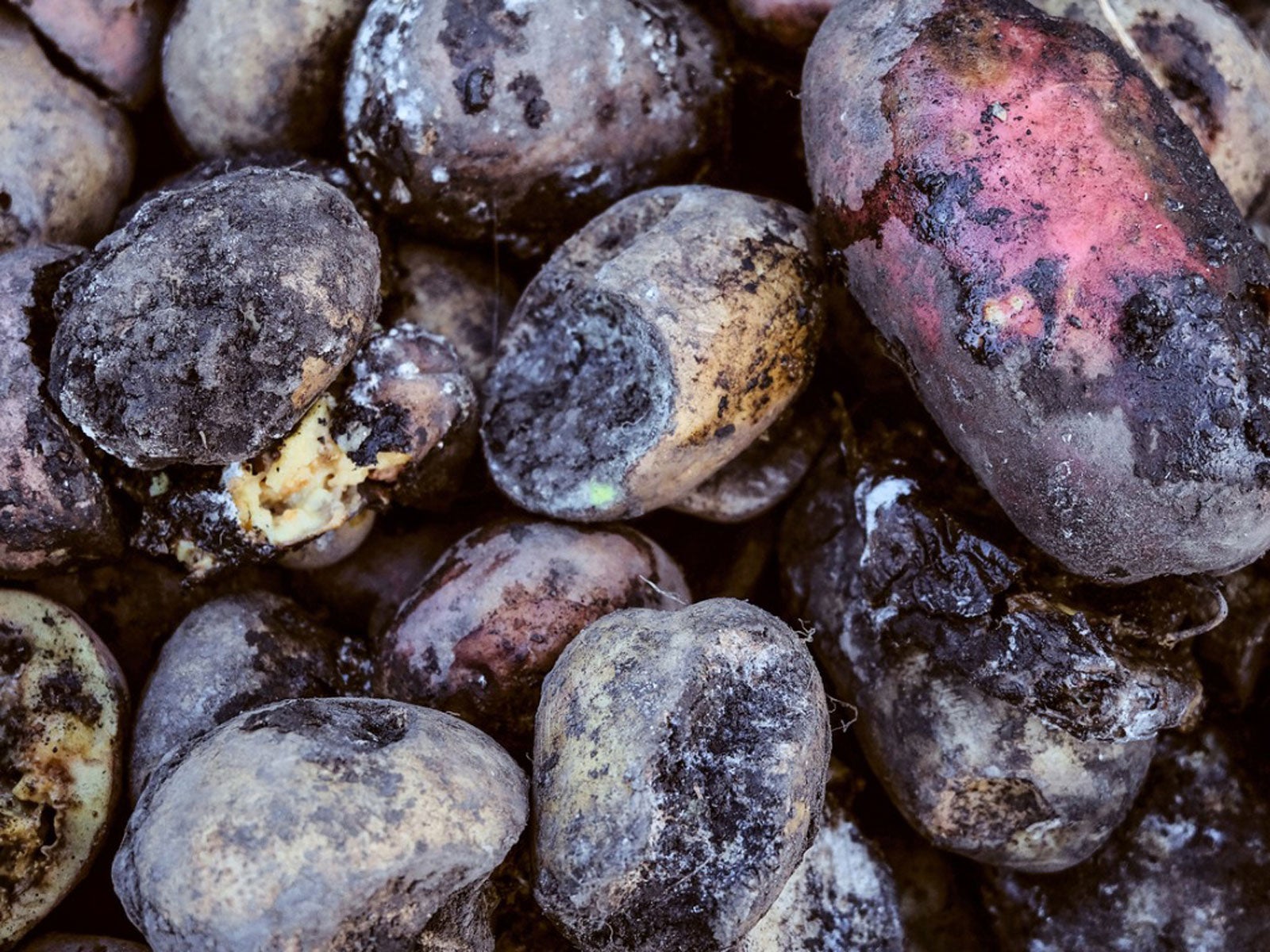Tuber Rot Diseases: Different Types Of Tuber Rot Problems


Tuber rot diseases are a major cause of crop loss, particularly affecting potatoes, but also carrots and other tuberous vegetables. Tuber rot in plants also poses a serious threat to hyacinths, bearded iris, cyclamen, dahlias, and other tuberous plants. Read on for common types of tuber rot and what you can do.
Common Types of Tuber Rot
Tuber soft rot problems may be bacterial but are most often caused by various fungi. Tuber rot in plants is difficult to control because the rot can live on contaminated equipment and can lie “in wait” in the soil throughout the winter. Tubers damaged by disease, stress, insects, or frost are most susceptible.
- Blight: Blight occurs when spores are washed into the soil from lesions on nearby foliage. Blight is indicated by discolored patches on the skin with reddish brown rot beneath the skin.
- Pink rot: Pink rot is a common, soil-borne fungi that enters tubers through the stem end and also through wounded areas. Tubers with pink rot display discolored patches on the skin. The flesh turns pink when exposed to air. This type of rot emits an unmistakable, vinegary odor.
- Backleg: Blackleg enters through rotting stems and stolons of contaminated tubers. The fungus begins with black lesions at the base of the stem. The growth of plants and stems is stunted, and tubers become soft, and water soaked.
- Dry rot: Dry rot is a soil-borne fungus recognized by brown patches on the skin and often a pinkish, white, or bluish fungal growth inside the tuber. Dry rot enters the tuber through wounds and cuts.
- Gangrene: Gangrene is a soil-borne fungus that displays “thumb-mark” lesions on the skin with similar marks inside. Tubers may also have black, pin-head fungus within the lesions.
Controlling Tuber Rot Diseases
Start with good quality, certified tubers. Inspect tubers carefully before planting. Dispose of soft, mushy, discolored, or rotting tubers. Always work with clean equipment and storage facilities. Sanitize all cutting tools. Use sharp blades to make a clean, even cut that will heal quickly.
Never plant tubers too closely and don’t allow them to become overcrowded. Don’t overfeed tuberous plants, as too much fertilizer makes them weak and more susceptible to rot. Be especially careful of high-nitrogen fertilizers. Avoid overwatering, as rot needs moisture to spread. Store tubers in a dry, cool, and well-ventilated area.
Consider planting in raised beds if soil drainage is poor. Dispose of contaminated plants and rotting tubers to prevent spread. Never put contaminated plant material in your compost bin. Rotate crops regularly. Never plant susceptible plants in infected soil. Control slugs and other pests, since damaged areas often allow rot to enter tubers. Avoid harvesting tuberous vegetables when the soil is wet.
Fungicides may help control some types of rot, although control is usually limited. Read the product label carefully, as it will tell you which fungus the product is effective against, and which plants can be treated. It’s a good idea to check with your local cooperative extension office before using fungicides.
Gardening tips, videos, info and more delivered right to your inbox!
Sign up for the Gardening Know How newsletter today and receive a free copy of our e-book "How to Grow Delicious Tomatoes".

A Credentialed Garden Writer, Mary H. Dyer was with Gardening Know How in the very beginning, publishing articles as early as 2007.
-
 Get Ready For A Summer Of Hummers! Grow These Full Sun Hummingbird Plants and Flowers
Get Ready For A Summer Of Hummers! Grow These Full Sun Hummingbird Plants and FlowersIf you’re lucky enough to enjoy a sunny backyard, make sure you are maxing out on your pollinator opportunities and grow these full sun hummingbird plants and flowers
By Tonya Barnett
-
 12 Lush Alternatives To A Lawn For Sustainable Spaces
12 Lush Alternatives To A Lawn For Sustainable SpacesAlternatives to a lawn are beautiful and also beneficial to your local ecosystem and its pollinators. Explore our top picks for plants to replace grass.
By Tonya Barnett